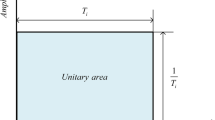Abstract
A numerical control (NC) program generated by a complex CAD/CAM system mainly composes a number of short line segments. For continuous short line segment machining, the traditional machining approach and the direct transitional approach cause the oscillations of the federate and affect machining efficiency. Moreover, the arc transitional approach enhances machining efficiency, but it brings about the greater machining error. To increase the smoothness of velocity profile and machining efficiency of continuous short line segment machining, this paper presents a parametrical cubic spline curve transitional approach with the S-shaped jerk-limited acceleration and deceleration with look-ahead. The trajectory error of the transitional curve is deduced according to the correlative factors, the preconditions of the transitional curve are put forward and analyzed, the mathematical model of the parametrical cubic spline curve is constructed, and the constraint conditions of the transforming velocity are built. In addition, the velocity control method is adopted for the smoother velocity profile. Thus, the machining productivity is dramatically increased and the velocity profile is more smoothness. The simulative and experimental results verify the feasibility and validity of the proposed approach.
Similar content being viewed by others
References
Coelho RT, Souza AF, Roger AR, Rigatti AMY, Ribeiro AAL (2010) Mechanistic approach to predict real machining time for milling free-from geometries applying high feed rate. Int J Adv Manuf Technol 46:1103–1111. doi:10.1007/s00170-009-2183-8
Erkorkmaz K, Altintas Y (2001) High speed CNC system design. Part I: Jerk limited trajectory generation and quintic spline interpolation. Int J Mach Tools Manuf 41(9):1323–1345. doi:10.1016/s0890-6955(01)00002-5
Hu J, Xian LJ, Wang YH, Wu ZY (2006) An optimal feedrate model and solution algorithm for high-speed machining of small line blocks with look-ahead. Int J Adv Manuf Technol 28:930–935
Boujelbene M, Moisan A, Tounsi N, Brenier B (2004) Productivity enhancement in dies and molds manufacturing by the use of C1 continuous tool path. Int J Mach Tools Manuf 44(1):101–107
Moisan A, Boujelbene M, Brenier B, Fabre A (2002) Improvement of the surface texture quality of milled dies and molds. In: Kuljanic E (ed) Advanced manufacturing system and technology. Springer, Vienna, pp 105–112
Ye PQ, Shi C, Yang KM, Lv Q (2008) Interpolation of continuous micro line segment trajectories based on look-ahead algorithm in high-speed machining. Int J Adv Manuf Technol 37:881–897
Wang L, Cao JF, Li YQ (2009) Speed optimizastion control method of smooth motion for high-speed CNC machine tools. Int J Adv Manuf Technol doi:10.1007/s00170-009-2383-2
Souza AF, Coelho RT (2007) Experimental investigation of feed rate limitations on high speed milling aimed at industrial applications. Int J Adv Manuf Technol 32:1104–1114
Luo FY, Zhou YF, Yin J (2007) A universal velocity profile generation approach for high-speed machining of small line segments with look-ahead. Int J Adv Manuf Technol 35:505–518
Shi C, Ye PQ, Lv Q (2006) Study on control algorithm for continuous segments trajectory interpolation. Proceeding of the 1st International Symposium on Digital Manufacture, pp 994–998
Zhang DL, Zhou LS (2006) Adaptive algorithm for federate smoothing of high speed machining. J Aeronaut 27(1):125–130
Lv Q, Hang H, Yang KM, Ye PQ (2008) Study on the method of increasing turning velocity during CNC continuous machining. Manufacturing Technology & Machine Tools 7:79–83
He J, You YP, Wang HM (2008) A micro-line transition algorithm based on Ferguson spline for high speed machining. China Mechanical Engineering 19(17):5802–5806
Wang JB, Yau HT (2009) Real-time NURBS interpolator: application to short line segments. Int J Adv Manuf Technol 41:1169–1185. doi:10.1007/s00170-008-1564-8
Yau HT, Wang JB (2007) Fast bezier interpolator with real-time look-ahead function for high-accuracy machining. Int J Mach Tools Manuf 47:1518–1529
Yau HT, Wang JB, Chen WC (2005) Development and implementation for real-time look-ahead interpolator by using Bezier curve to fit CNC continuous short blocks. Proc 2005 IEEE International Conference on Mechatronics, pp 78–83
Ren K, Fu JZ, Chen ZC (2006) New look-ahead algorithm for velocity control in high speed machining. Journal of Zhejiang University 40:1985–1988
You YP, He J (2006) A parametrical interpolator with smooth kinematic profiles for high speed machining. Key Eng Mater 315–316:169–173
Liu YJ, Sun LN, An ZW (2005) An approach for generating high velocity and high acceleration trajectories of industrial robots. Pro cof 2005 IEEE Int Symp Computational Intelligence in Robotics and Automation, Espoo, Finland, 199–204
Dong JY, Ferreira PM, Stori JA (2007) Feed-rate optimization with jerk constraints for generating minimum-time trajectories. Int J Mach Tools Manuf 47:1941–1955
Author information
Authors and Affiliations
Corresponding author
Rights and permissions
About this article
Cite this article
Zhang, L.B., You, Y.P., He, J. et al. The transition algorithm based on parametric spline curve for high-speed machining of continuous short line segments. Int J Adv Manuf Technol 52, 245–254 (2011). https://doi.org/10.1007/s00170-010-2718-z
Received:
Accepted:
Published:
Issue Date:
DOI: https://doi.org/10.1007/s00170-010-2718-z



